| Anmol Chemicals is the pioneer manufacturers of Lactobionic Acid Calcium lactobionate Sodium lactobionate FCC Food USP NF BP Ph Eur Grade, Pharmaceutical Excipients Food & Flavor chemicals in India. We offer Halal and Kosher Lactobionic Acid Calcium lactobionate Sodium lactobionate FCC Food USP NF BP Ph Eur Grade made in an ISO9001, ISO22000 (FSSC22000) cGMP and GLP certified facility. Our group has several manufacturing facilities spread across the world, supported by toll manufacturers and representatives in UAE, Europe, Africa, USA, China and has several associated manufacturing facilities spread across India. All the Information on Physics, Chemistry, Applications, Uses and Technology on Manufacture of Lactobionic Acid Calcium lactobionate Sodium lactobionate FCC Food USP NF BP Ph Eur Grade is in these pages. |
| The units have one or more of the certifications like FDA GMP, ISO 9001, ISO 22000, HACCP, REACH, Kosher & Halal |

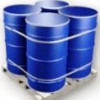

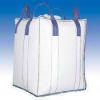
Lactobionic Acid Calcium lactobionate Sodium lactobionate FCC Food USP NF BP Ph Eur Grade Manufacturers Suppliers
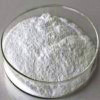
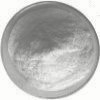
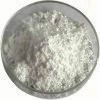
Lactobionic Acid SDS MSDS of Manufacturers
Calcium Lactobionate SDS MSDS of Manufacturers
Sodium Lactobionate SDS MSDS of Manufacturers
Lactobionic Acid: CAS Number: 96-82-2, EINECS EC Number: 202-538-3, Molecular Formula: C12H22O12, Molecular Weight: 358.30
CAS Number: 110638-68-1, EINECS EC Number: 225-668-2, Molecular Formula: C24-H42-Ca-O24-2H2O, Molecular Weight: 790.68
CAS Number: 27297-39-8, Molecular Formula: C12H21NaO12 for anhydrous C12H24NaO12-H2O for monohydrate, Molecular Weight: 380.28 for anhydrous 398.30 for monohydrate
Lactobionic acid (4-O-β-galactopyranosyl-D-gluconic acid) is a sugar acid. It is a disaccharide formed from gluconic acid and galactose. It can be formed by oxidation of lactose. Lactobionic acid is also used in the cosmetics industry as an antioxidant and in the pharmaceutical industry as an excipient for formulation.
Specifications of Lactobionic Acid USP NF Grade:
C12H22O12 (acid form) --- 358.30 --- CAS 96-82-2.
C12H20O11 (δ-lactone) 340.28 --- [CAS 5965-65-1].
4-O-β-Galactopyranosyl-d-gluconic acid.
DEFINITION
Lactobionic Acid is a mixture in variable proportions of 4-O-β-d-galactopyranosyl-d-gluconic acid and 4-O-β-d-galactopyranosyl-d-glucono-1,5-lactone. It contains 98% toT 102%, on the anhydrous basis.
IDENTIFICATION
A. Infrared Absorption: To pass the test.
B. Thin-Layer Chromatography: To pass the test.
Water: 5.0% maximum.
Appearance of Solution: 120 mg/mL of Lactobionic Acid
Standard stock solution: The Sample solution is clear and not more intensely colored than the Reference solution.
Optical Rotation: 10 mg/mL of Lactobionic Acid. Allow to stand for 24 h. Acceptance criteria: +23.0° to +29.0° (anhydrous substance).
Reducing Sugars: To pass the test. Maximum 0.2% of reducing sugars, as glucose.
Articles of Botanical Origin: 0.2% maximum.
Lactobionic Acid BP Grade Specifications
Ph Eur
C12H22O12 (acid form)ıı358.3ıı96-82-2
C12H20O11 (d-lactone)ıı340.3ıı5965-65-1
DEFINITION
Mixture in variable proportions of 4-O-b-D-galactopyranosyl-D-gluconic acid and 4-O-b-Dgalactopyranosyl-D-glucono-1,5-lactone.
Content: 98.0 per cent to 102.0 per cent (anhydrous substance).
CHARACTERS
Appearance: White or almost white powder.
Solubility: Freely soluble in water, slightly soluble in glacial acetic acid, in anhydrous ethanol and in methanol.
mp: About 125C with decomposition.
IDENTIFICATION
A. Infrared absorption spectrophotometry.
Comparisonılactobionic acid CRS.
If the spectra obtained show differences, dissolve the substance to be examined and the reference substance separately in water, dry at 105C and record new spectra using the residues.
B. Thin-layer chromatography.
Test solution: Dissolve 10 mg of the substance to be examined in water and dilute to 1 ml with the same solvent.
Reference solution: Dissolve 10 mg of lactobionic acid CRS in water and dilute to 1 ml with the same solvent.
Plate TLC silica gel plate.
Mobile phase concentrated ammonia, ethyl acetate, water, methanol.
Application: 5 μl.
Development: Over 3/4 of the plate.
Detection: Spray 3 times with ammonium molybdate solution and heat in an oven at 110C for 15 min.
Results: The principal spot in the chromatogram obtained with the test solution is similar in position and colour to the principal spot in the chromatogram obtained with the reference solution.
TESTS
Appearance of solution: The solution is clear and not more intensely coloured than reference.
Specific optical rotation: + 23.0 to + 29.0 (anhydrous substance).
Dissolve 1.0 g in 80 ml of water and dilute to 100.0 ml with the same solvent. Allow to stand for 24 h.
Reducing sugars: Maximum 0.2 per cent, calculated as glucose.
Dissolve 5.0 g in 25 ml of water with the aid of gentle heat. Cool and add 20 ml of cupricitric solution and a few glass beads. Heat so that boiling begins after 4 min and maintain boiling for 3 min. Cool rapidly and add 100 ml of a 2.4 per cent V/V solution of glacial acetic acid and 20.0 ml of 0.025 M iodine. With continuous shaking, add 25 ml of a mixture of 6 volumes of hydrochloric acid and 94 volumes of water and, when the precipitate has dissolved, titrate the excess of iodine with 0.05 M sodium thiosulphate using 1 ml of starch solution, added towards the end of the titration, as indicator. Not less than 12.8 ml of 0.05 M sodium thiosulphate is required.
Heavy metals: Maximum 20 ppm.
Water: Maximum 5.0 per cent, determined on 0.50 g.
Total ash: Maximum 0.2 per cent.
Calcium Lactobionate USP Grade Specifications
C24H42CaO24.2H2O -- 790.68
D-Gluconic acid, 4-O- -D-galactopyranosyl-, calcium salt (2:1), dihydrate.
Lactobionic acid, calcium salt (2:1), dihydrate.
Calcium lactobionate (1:2), dihydrate [110638-68-1].
Calcium Lactobionate contains not less than 96.0 percent and not more than 102.0 percent of C24H42CaO24.2H2O.
Identification:
A: A solution (1 in 50) responds to the tests for Calcium.
B: Infrared Absorption 197K.
C: Dissolve a quantity of it in water to obtain a test solution containing 10 mg per mL. Similarly prepare a Standard solution of USP Calcium Lactobionate RS in water containing 10 mg per mL. Apply separately 5 :L of the test solution and 5 :L of the Standard solution to a suitable thin-layer chromatographic plate coated with a 0.25-mm layer of chromatographic silica gel. Dry the plate in a current of cool air. Place the plate in a suitable chromatographic chamber lined with filter paper and previously equilibrated with a solvent system consisting of a mixture of alcohol, water, ethyl acetate, and ammonium hydroxide (50:30:10:10). Develop the chromatogram until the solvent front has moved about three-fourths of the length of the plate. Remove the plate from the chamber, and dry at 100 for 20 minutes. Allow to cool, and spray with a spray reagent prepared as follows. Dissolve 2.5 g of ammonium molybdate in about 50 mL of 2 N sulfuric acid in a 100-mL volumetric flask, add 1.0 g of ceric sulfate, swirl to dissolve, dilute with 2 N sulfuric acid to volume, and mix. Heat the plate at 110 for about 10 minutes: the principal spot obtained from the test solution corresponds in color, size, and RF value to that obtained from the Standard solution.
Specific rotation: between +22.0 and +26.5 .
pH: between 5.4 and 7.4, in a solution (1 in 20).
Halides: A 1.2-g portion tested as directed under Chloride shows no more turbidity than corresponds to 0.7 mL of 0.020 N hydrochloric acid (0.04%).
Sulfate: A 2.0-g portion dissolved in boiling water shows no more sulfate than corresponds to 1 mL of 0.020 N sulfuric acid (0.05%).
Heavy metals: Mix 1 g with 4 mL of 1.2 N hydrochloric acid, add water to make 25 mL, warm gently until dissolved, and cool to room temperature: the limit is 0.002%.
Reducing substances: Transfer 1.0 g to a 250-mL conical flask, dissolve in 20 mL of water, and add 25 mL of alkaline cupric citrate. Cover the flask, boil gently for 5 minutes, accurately timed, and cool rapidly to room temperature. Add 25 mL of 0.6 N acetic acid, 10.0 mL of 0.1 N iodine, and 10 mL of 3 N hydrochloric acid, and titrate with 0.1 N sodium thiosulfate VS, adding 3 mL of starch as the endpoint is approached. Perform a blank determination, omitting the specimen, and note the difference in volumes required. Each mL of the difference in volume of 0.1 N sodium thiosulfate consumed is equivalent to 2.7 mg of reducing substances (as dextrose): the limit is 1.0%.
Calcium Lactobionate FCC Food Grade
Calcium 4-(_,D-Galactosido)-D-gluconate
C24H42CaO24 Formula wt, anhydrous 754.66
CAS: [5001-51-4]
DESCRIPTION
Calcium Lactobionate occurs as a white to cream-colored, free-flowing powder. It readily forms double salts, such as the chloride, bromide, and gluconate. It is anhydrous when obtained by spray-drying, or the dihydrate when obtained by crystallization. It is freely soluble in water, but insoluble in alcohol and in ether. It decomposes at about 120°. The pH of a 1:10 aqueous solution is between 6.5 and 7.5.
Function: Firming agent in dry pudding mixes; nutrient.
REQUIREMENTS
Identification:
A. The infrared absorption spectrum of a potassium bromide dispersion of the sample, previously dried at 105C for 8 h, exhibits relative maxima at the same wavelengths as those of a similar preparation of USP Calcium Lactobionate Reference Standard.
B. A sample gives positive tests for Calcium.
Calcium Content: Not less than 5.05% and not more than 5.55% of calcium (Ca), calculated on the dried basis.
Halides: Not more than 0.04%.
Lead: Not more than 2 mg/kg.
Loss on Drying: Not more than 8.0%.
Optical (Specific) Rotation [α]D20C: Between +23° and +25°.
Reducing Substances: Not more than 1.0%.
Sulfate: Not more than 0.7%.
General Properties and Specifications of Sodium lactobionate or Lactobionic acid sodium salt:
Description: White to pale yellow crystalline powder.
Assay: 98% to 102%
Loss on Drying: 1% maximum.
Heavy Metals: 0.003% maximum.
Storage Temperature: +20C. Shipping may be ambient.
Lactobionic Acid Calcium lactobionate Sodium lactobionate FCC Food USP NF BP Ph Eur Grade Suppliers manufacturers
Anmol Chemicals
S-8, SARIFA MANSION, 2ND FLANK ROAD, CHINCHBUNDER, MUMBAI 400009, INDIA
TEL: (OFFICE) 91-22-23770100, 23726950, 23774610, 23723564 - FAX: 91-22-23728264
e-mail: anmolc@mtnl.net.in

Exports to USA, Canada, UAE, Dubai, South Africa, Tanzania, Kenya, Nigeria, Egypt, Uganda, Turkey, Mexico, Brazil, Chile, Argentina, Europe Netherlands, Italy, Spain, Germany, Portugal, France, Malaysia, Indonesia, Thailand, Vietnam, Korea, Japan, etc.
Copyright and Usual Disclaimer is Applicable. 20 January, 2022